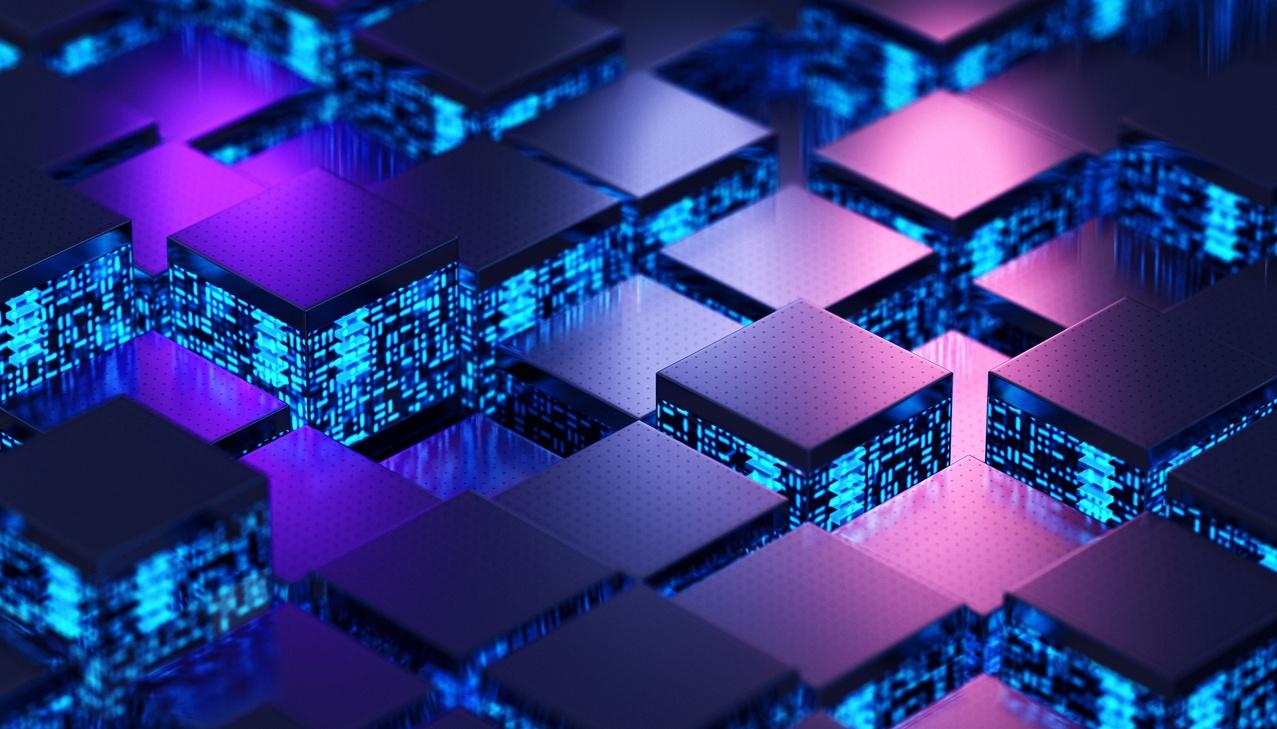By using blockchain and smart contracts, DePINs networks improve transparency, lower costs and boost … More resilience across sectors like the internet, storage and energy.
Decentralized Physical Infrastructure Networks, known as DePINs, are reshaping how we interact with the physical world by merging with blockchain technology. DePINs offer a permissionless way for individuals to contribute real-world resources like bandwidth, energy or storage and earn tokens in return. This innovation creates shared infrastructure that is transparent, secure and operated by the crowd, not corporations.
This article will explore how DePINs work, why they matter and which industries they are transforming. From decentralized WiFi to community-powered energy grids, DePINs are creating new incentives for people to participate in building the world’s next generation of infrastructure.
The Basics Of DePINs
DePINs allow real-world services to be owned and operated by individual users instead of large corporations. Using token rewards, DePINs allow users to contribute physical resources and get paid for them. This approach can make infrastructure more accessible, affordable and suited to local needs.
Traditional infrastructure is managed by a few centralized players. DePINs flip that model using open networks where anyone can run a device. The network keeps track of everything on a public blockchain, promoting transparency and making fraudulent activity difficult. Smart contracts automate transactions, so manual approval is not required to process each action.
DePINs invite competition and innovation and give smaller players a chance to participate in infrastructure projects without needing massive upfront funding.
How Do DePINs Work?
DePINs work by using blockchain technology to record transactions, verify participation and manage the exchange of services. Participants install physical hardware such as routers, sensors or storage devices and share their unused capacity with the network. In return, they receive token rewards. This system allows infrastructure to be owned and operated by a broad group of users rather than a single central provider.
Smart contracts help automate the network’s operation. They follow predefined rules to manage service delivery and distribute rewards without manual intervention. Token incentives are used to compensate contributors and access services within the network. This creates a system where participation and usage are directly linked, helping the network sustain itself over time.
This structure is sometimes described as a flywheel. The process begins when users are rewarded for contributing resources. As more people participate, the network becomes more capable and the quality of services improves. Better performance attracts additional users and potential investors. As the network grows, its value and utility increase, leading to more participation and continued expansion.
Real World Applications Of DePINs
DePINs are being used in a growing number of real world applications that rely on shared infrastructure. These include decentralized wireless networks that expand internet access, decentralized storage solutions that offer alternatives to traditional cloud providers and community-powered energy systems such as EV charging stations and smart energy grids. Each use case highlights how DePINs can lower costs, increase access and reduce reliance on centralized systems.
Decentralized Wireless Network
Decentralized wireless networks use a peer-to-peer model to provide internet and device connectivity without relying on large telecom providers. Individuals operate physical infrastructure like routers, antennas or Internet-of-Things (IoT) devices, helping expand coverage and reduce costs, especially in underserved areas. Smartphones and sensors connect through nearby nodes, enabling more resilient and efficient communication.
Projects like Helium and Pollen Mobile showcase this approach. Helium rewards users for running low-power hotspots that support IoT connectivity, while Pollen focuses on decentralized 5G networks powered by community-hosted radios. Both rely on community participation to grow infrastructure and support applications in smart cities, rural areas and logistics.
Decentralized Storage Solutions
Decentralized storage networks spread data across many nodes rather than relying on centralized data centers. This reduces the need for energy-intensive facilities and cuts infrastructure costs. These networks offer greater efficiency and flexibility by using underutilized storage on individual devices or small servers.
They can also be deployed near renewable energy sources, making it easier to power them with solar, wind or hydro. Platforms like Filecoin and Arweave reward users for sharing storage space while securing and distributing data through blockchain protocols.
EV Charging Stations and Energy Grids
Decentralized energy networks let individuals and businesses produce, store and share power without relying on major utilities. Microgrids powered by solar panels can store excess energy in local batteries and release it during peak demand or outages. Smart grids manage this in real time, improving reliability.
DePIN-based EV charging networks allow people to host chargers and earn tokens from drivers. This speeds up infrastructure growth and supports cleaner, more resilient energy systems.
Benefits of DePINs
Shifting control from central providers to communities makes infrastructure more affordable, resilient and inclusive. This model lowers costs, opens doors for small-scale participants and keeps systems running during disruptions. It also encourages wider involvement in building and maintaining essential services like internet access, energy and storage.
Lower Costs
By removing intermediaries, DePINs cut infrastructure costs and enable direct participation. People in underserved areas can share or access resources, lowering barriers and expanding access to essential services like internet, energy and storage. Without centralized overhead, services are often more affordable and better suited to local needs.
They also boost efficiency by using underutilized resources instead of building new systems, reducing waste, and supporting a more sustainable model.
Resilience And Redundancy
Greater resilience is achieved by distributing infrastructure across many independent nodes, which reduces the risk of a single point of failure. Unlike centralized systems that can be disrupted by outages, cyberattacks or physical damage to a central hub, decentralized networks can continue operating even if some nodes go offline. This built-in redundancy ensures more consistent service. The distributed nature of DePINs also enhances security and privacy, making them less vulnerable to censorship, surveillance or control by any single entity.
Democratization Of Infrastructure
Infrastructure is becoming more open and participatory through decentralized networks that let individuals and communities build and operate essential services. Instead of relying on a few centralized providers, these networks use blockchain and tokens to incentivize anyone to contribute. This model promotes transparency, reduces entry barriers and supports broader access to services like the internet, data storage and EV charging.
As the sector grows, DePINs are helping prevent monopolies by enabling multiple stakeholders to share ownership and development. This shift toward shared infrastructure encourages competition, lowers prices and fosters innovation across industries.
Challenges Facing DePINs
Despite their potential, DePINs face hurdles that could slow growth. Scaling across many nodes can strain performance and reliability. Regulatory uncertainty adds compliance risks as laws around digital assets evolve. Adoption may also lag, since these systems often require technical know-how and a shift from familiar centralized models.
Scalability Issues
Relying on distributed funding and operations makes scaling difficult. Token incentives and crowdfunding are inclusive but often inconsistent and harder to coordinate than traditional methods, which can limit growth and deter institutional investment.
Without central oversight, upkeep and troubleshooting depend on individuals who may not act quickly, risking delays and reduced network reliability.
Regulatory Concerns
Regulatory uncertainty remains a significant obstacle for projects building decentralized infrastructure. Operating at the intersection of blockchain, hardware and real-world services, these networks face unique challenges that most crypto sectors avoid. Unlike purely digital applications, they involve physically deploying assets like wireless hotspots, storage nodes and energy systems. Yet regulators have provided little clarity on token classification, governance, data privacy or global compliance. This lack of guidance leaves builders exposed to enforcement and legal ambiguity.
Adding to the difficulty is the political influence of legacy industries. Telecoms, cloud providers and utilities often fund PACs and lobbying efforts that can shape regulation to preserve their dominance. This creates an uneven playing field. Without clear, balanced rules, innovation risks being stifled before it can scale.
User Adoption
A wide range of use cases, from wireless and storage to community-run services, makes presenting a clear, relatable message challenging. The technical nature of many projects further slows product-market fit and mainstream traction.
Without strong messaging and user-friendly design, adoption may lag. To scale, the sector must simplify its value proposition and show how these networks improve real-world services in practical, accessible ways.
How Have DePINs Already Impacted Some Industries?
Industries with high capital needs and little competition are already seeing DePIN adoption. Helium built a decentralized network of IoT and mobile hotspots, partnering with T-Mobile to offer lower-cost service. Hivemapper and Geodnet collect geospatial data through user-operated devices, feeding navigation and AI systems. These community-driven networks replace expensive, centralized models with cheaper, more scalable alternatives.
In AI infrastructure, projects like Grass let users monetize bandwidth for data scraping, while Akash enables decentralized GPU leasing. Bittensor, part of decentralized AI, supports compute-focused subnets. Together, these efforts shift control over data and compute away from tech giants and toward individuals.
The Future Of DePINs
The future of these networks is poised to extend well beyond current applications, potentially reshaping industries like healthcare, transportation, environmental monitoring, and public safety.
As AI and machine learning evolve, DePINs can supply the decentralized compute, real-world data, and infrastructure needed to train and launch advanced models. Their integration into the broader Web3 ecosystem also enables greater user ownership, data privacy, and interoperability across decentralized applications. By removing traditional gatekeepers and distributing control, DePINs could serve as the backbone for a more open, efficient, and resilient digital-physical economy bridging the gap between Web3 innovation and real-world utility.
Bottom Line
Control is shifting from centralized providers to individuals and communities. By using blockchain and smart contracts, these networks improve transparency, lower costs and boost resilience across sectors like the internet, storage and energy. Though still early, DePINs are already making an impact in telecom and AI, and are positioned to transform many more industries in the years ahead.
Frequently Asked Questions (FAQs)
DePINs are decentralized networks that use blockchain to let individuals share real-world resources like the internet, energy or storage in exchange for token rewards.
DePINs connect blockchain to real-world infrastructure by using physical devices like routers, sensors and GPUs. Unlike purely digital systems, it bridges the gap between the digital and physical worlds.
Yes, DePINs use encryption, blockchain verification and decentralized design to enhance security and reduce single points of failure.
DePIN has the potential to complement or replace parts of traditional infrastructure by offering lower costs, greater resilience and broader access.





